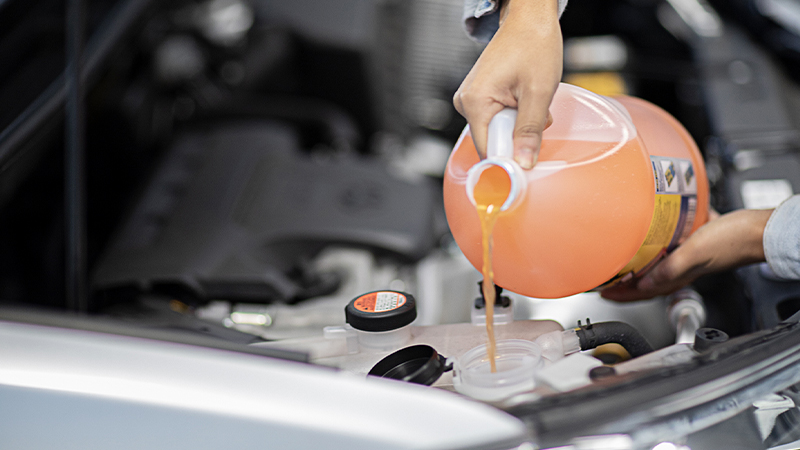Regular maintenance is essential for keeping your car running smoothly, extending its lifespan, and ensuring your safety on the road. By performing routine maintenance tasks, you can identify potential issues early, prevent costly repairs, and maintain optimal performance. In this comprehensive guide, we’ll outline the essential steps in car maintenance procedures that every vehicle owner should know.
1. Check Fluid Levels:
Regularly checking and topping up essential fluids in your car is crucial for proper functioning. These fluids include:
- Engine Oil: Check the engine oil level regularly using the dipstick. Top up with the manufacturer-recommended oil type and viscosity as needed.
- Coolant: Inspect the coolant level in the reservoir and top up with a mixture of coolant and water as necessary to maintain proper levels.
- Transmission Fluid: Check the transmission fluid level according to the manufacturer’s instructions. Top up or replace transmission fluid as needed.
- Brake Fluid: Inspect the brake fluid level in the reservoir and top up with the recommended brake fluid type if necessary.
- Power Steering Fluid: Check the power steering fluid level and top up as needed with the manufacturer-recommended fluid.
2. Change Engine Oil and Filter:

Regular oil changes are essential for maintaining engine performance and longevity. Follow the manufacturer’s recommended oil change intervals and replace the engine oil and oil filter accordingly. Use high-quality oil and filters for optimal engine protection.
3. Inspect and Rotate Tires:
Regular tire inspections and rotations help ensure even wear and extend tire lifespan. Inspect tires for signs of wear, damage, or uneven wear patterns. Rotate tires according to the recommended rotation pattern to promote even tread wear and maximize tire longevity.
4. Check and Maintain Tire Pressure:
Maintaining proper tire pressure is crucial for safety, fuel efficiency, and tire longevity. Use a tire pressure gauge to check tire pressure regularly, including the spare tire. Inflate tires to the recommended pressure levels specified in the owner’s manual or on the driver’s side door jamb. Interested? Read more at the link: https://outdoorlogic.net/how-to-get-a-broken-key-out-of-ignition/
5. Inspect and Replace Wiper Blades:
Check the condition of your wiper blades regularly and replace them if they show signs of wear, streaking, or damage. Properly functioning wiper blades ensure clear visibility during inclement weather conditions, improving driving safety.
6. Test Exterior Lights:
Regularly test all exterior lights, including headlights, taillights, brake lights, turn signals, and hazard lights. Replace any bulbs that are burnt out or not functioning properly to maintain visibility and safety on the road.
7. Check and Replace Air Filters:
Inspect the engine air filter and cabin air filter regularly and replace them if they are dirty or clogged. Clean air filters promote proper engine performance, fuel efficiency, and interior air quality.
8. Inspect Belts and Hoses:
Inspect engine belts and hoses for signs of wear, cracks, or leaks. Replace worn or damaged belts and hoses to prevent breakdowns and ensure proper operation of essential engine components.
9. Test Battery and Charging System:

Check the battery terminals for corrosion and ensure a secure connection. Test the battery’s voltage and charging system to ensure proper operation. Replace the battery if it is old, weak, or showing signs of failure.
10. Perform Brake Inspection:
Regularly inspect the brake system, including brake pads, rotors, calipers, and brake lines. Replace worn brake pads and rotors as needed, and bleed the brake system to ensure proper brake function and safety.
11. Maintain Fluids for Other Systems:
In addition to essential fluids like oil and coolant, don’t forget to check and maintain fluids for other systems such as:
- Windshield Washer Fluid: Keep the windshield washer fluid reservoir filled to ensure clear visibility.
- Differential Fluid: Check and top up differential fluid levels as needed for proper lubrication and performance.
- Transfer Case Fluid: If applicable, inspect and maintain transfer case fluid levels to ensure proper four-wheel drive operation.
Regular car maintenance is essential for preserving your vehicle’s performance, reliability, and safety. By following these essential steps in car maintenance procedures, you can identify potential issues early, prevent costly repairs, and ensure a smooth and enjoyable driving experience. Make car maintenance a priority by scheduling regular inspections and servicing, and consult with a qualified mechanic for professional assistance when needed. Remember, proactive maintenance is key to keeping your car in top condition for years to come.

